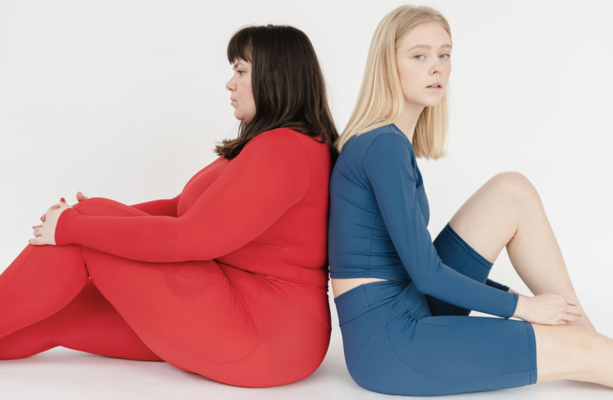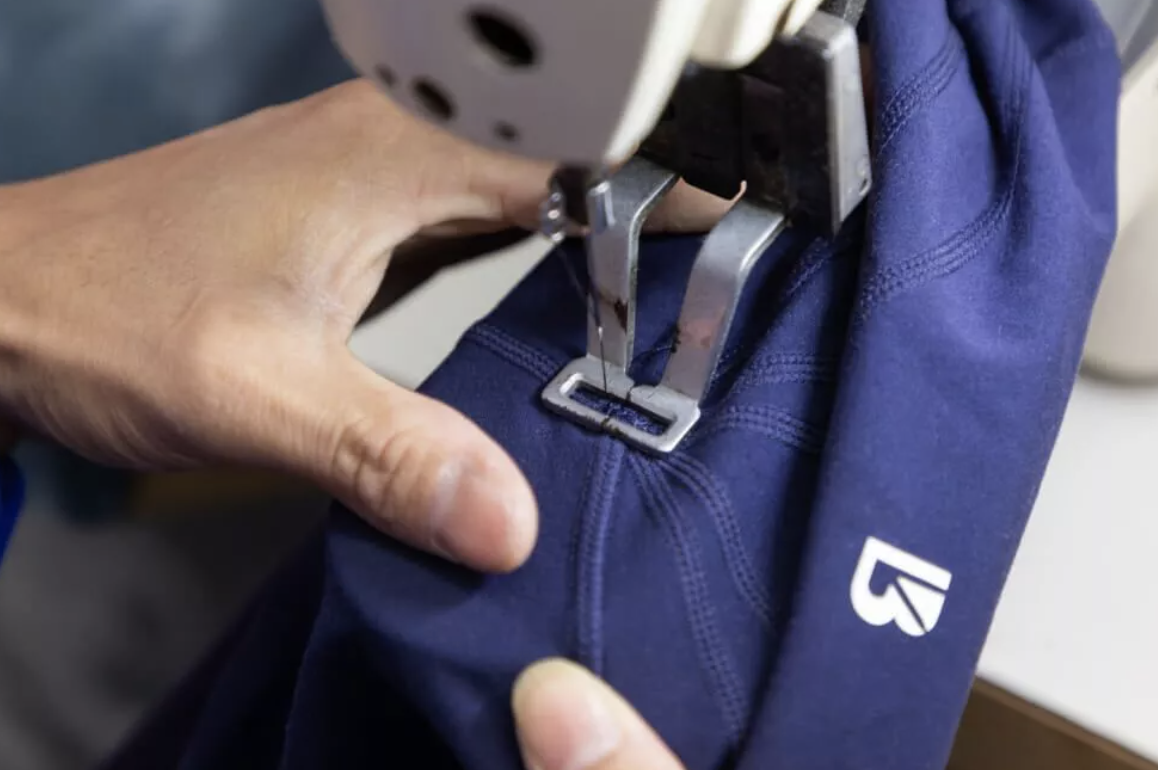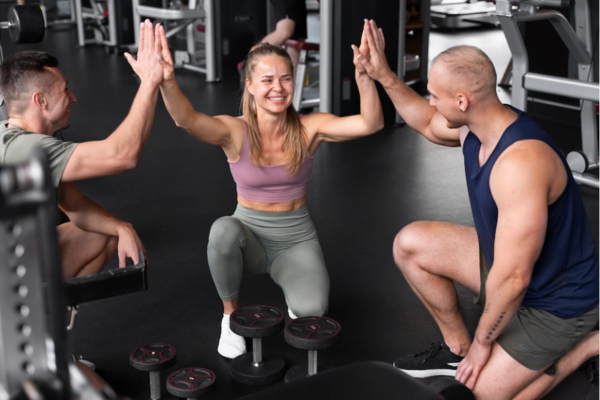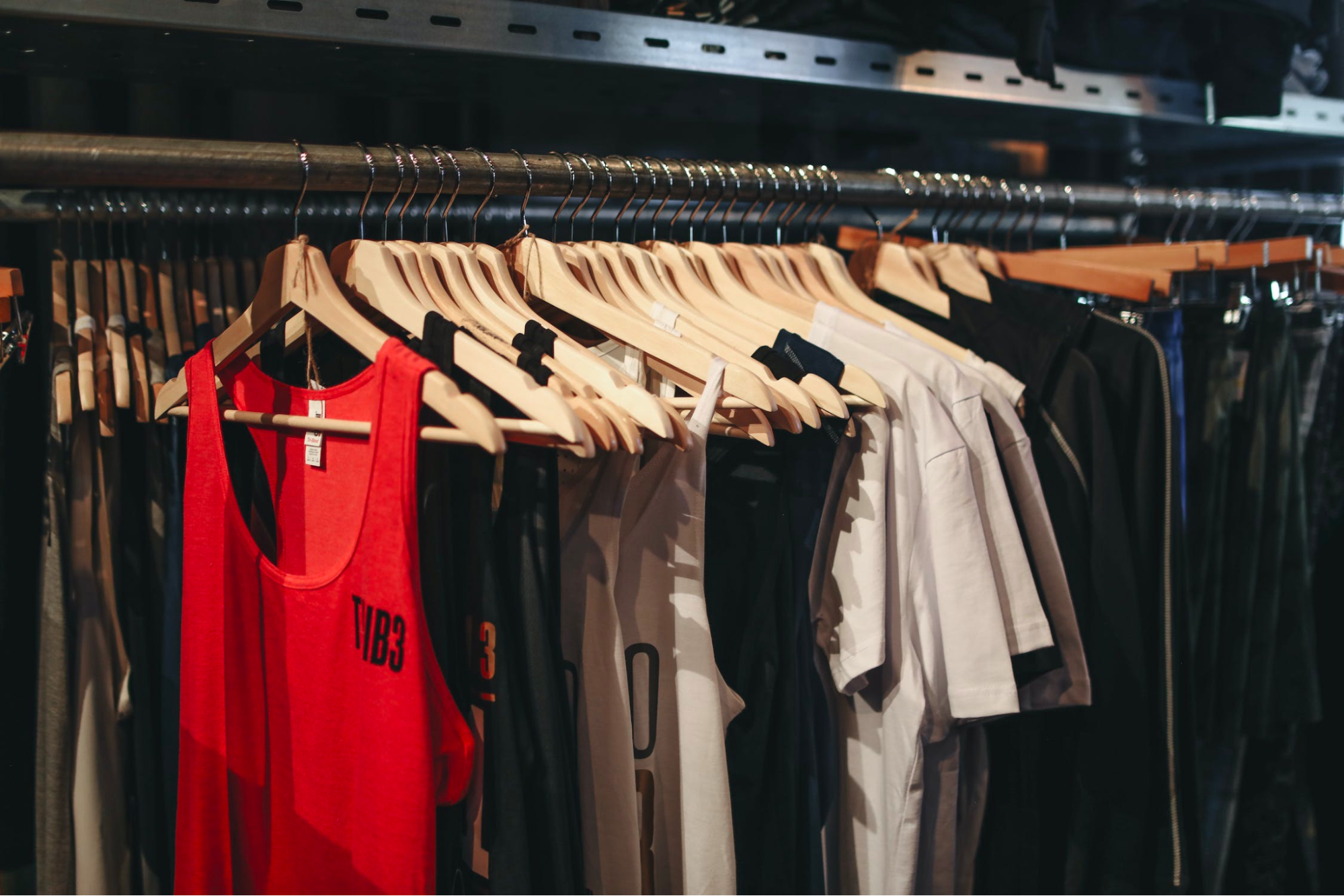In today’s fast-paced environment, everyone must be fit and active in order to maintain a healthy lifestyle. Teenagers, too! Today, most of their playtime is dominated by video games and computer games, which negatively impacts their mental and physical development. Sports and exercise are their only means of staying active and disciplined.
Activewear and sportswear are essential components of children’s physical activity. Although they seem similar and activewear might be mistaken for sportswear, sportswear is a distinct form of clothing. While children’s activewear can be worn casually, sportswear is only for basketball competitions, cricket matches, etc.
They are also two types of clothes for those who live an active lifestyle. In reality, sportswear refers to clothing developed specifically for athletic activities, whereas activewear refers to any type of clothing that helps one stay comfortable while being physically active.
It is true that there is a lot of overlap between the two, and many brands produce both types of clothing. However, there are some key differences to keep in mind. Sportswear is usually more fitted and designed to improve performance, whereas activewear is more relaxed and focused on comfort. Sportswear is also often made from specialized materials that wick away sweat, whereas activewear can be made from a variety of different fabrics.
This article compares sportswear with activewear and provides tips on choosing (learn: Athleisure VS Activewear: Choose a Style) the right apparel for physical activity.
What Is Activewear?

Activewear is defined as clothing designed to be worn with the intention of participating in a sport or physical activity. The definitions imply that activewear is a reasonably broad term. And that activewear gear can be used as wardrobe essentials in addition to being purchased for working out or participating in sports. Activewear materials are used to make long and short sleeve t-shirts, sweatshirts, crop tops/sports bras, leggings, shorts, and sweatpants. It may also be referred to as “loungewear.”
What Types of Clothing Would Classify as Activewear?

It may be working from home all day in comfortable activewear, picking up the kids from school, and then going to a high-intensity training session. It could also be the concept of going to a yoga class, having coffee with friends, and then going to the mall. Because functionality, comfort, and longevity were considered during the design process of every activewear, wearing it makes it much simpler to go about one’s regular activities.
There are a few key items that are most commonly associated with women’s activewear. These items include sports bras, leggings, and tank tops. While many other items can be included in an activewear wardrobe, these three items are staples.
Sports bras are designed to provide support for the breasts during physical activity. They come in a variety of styles and sizes to accommodate different body types. Leggings are tight-fitting pants that can be worn for both exercise and everyday activities. Tank tops are sleeveless shirts that are often worn as part of a layering system or on their own.
What Is Sportswear?

Sportswear is gear that is worn while playing sports or exercising. It is designed to protect the body, keep the wearer comfortable, and improve performance. The style of clothing depends on the sport; for example, tennis players usually wear whites, while football players usually wear their team colors.
The fabric used in sportswear is important for both comfort and performance. The weight of the fabric is important for regulating body temperature; for example, lighter fabrics are better for hot weather and heavier fabrics are better for cold weather. The fabric should also be breathable to allow sweat to evaporate. Durability is another important consideration, as sportswear should be able to withstand the rigors of exercise or play.
What Types of Clothing Would Classify as Sportswear?

There is a lot of debate over what items can be classified as sportswear. Generally, sportswear is clothing that is designed to be worn while participating in physical activity. This can include items such as T-shirts, shorts, leggings, tracksuits, and sneakers. Another type of clothing that is classified as sportswear is joggers. Joggers are a type of sportswear that can be worn by both men and women. They are typically made from a lightweight fabric such as cotton or polyester and have a comfortable, relaxed fit. They usually have an elastic waistband and cuffs at the ankles, and may also have pockets.
Products like wholesale women’s joggers can be found at many online retailers, or through clothing manufacturers and distributors. However, prices will vary depending on the quality of the fabric and the style of the joggers.
Items such as hoodies, sweatpants, and baseball hats are also considered to be sportswear. Ultimately, it is up to the individual to decide what they feel comfortable wearing while participating in physical activity.
Commonalities Between Sportswear and Activewear

Durability
One of the most crucial considerations when buying athletic clothing is activewear and sportswear’s durability. Activewear typically uses breathable and moisture-wicking fabrics to keep the wearer cool and comfortable even while engaging in strenuous physical activity. On the other hand, sportswear is constructed to resist repeated wear and tear and typically uses heavier and more durable fibers.
The following are some essential commonalities between activewear and sportswear durability:
- Activewear and activewear are typically made of synthetic materials. Designed for elastic, lightweight, easy to wash and dry, and resistant to wrinkles.
- To avoid overheating when exercising, both forms of clothing need good air circulation.
Comfort
Sportswear and activewear are made to assist in avoiding injuries and ventilated fabric. It also allows the body to move and stretch. While keeping protected from the elements like sun exposure and encouraging to development of a fitness mindset.
Fashion
When discussing the commonalities between sportswear and activewear, it is important to consider the following: shape, color, space, form, line, and value.
Shape: Both sportswear and activewear tend to follow a similar silhouette. This is because both are designed to allow the body a full range of motion. As a result, both will often have a slim fit that is not too tight or too loose.
Color: While there is no set color palette for either sportswear or activewear, both tend to favor muted colors. This is because bright colors can be distracting when working out or playing sports. Additionally, dark colors can help hide sweat and other evidence of strenuous activity.
Space: Sportswear and activewear are both designed to be worn in specific environments. Sportswear is meant to be worn during physical activity, whether working out at the gym or playing a sport. Activewear, on the other hand, is meant to be worn during everyday activities. As a result, both types of clothing tend to be designed for comfort and breathability.
Form: The form of sportswear and activewear is dictated by the function of the clothing. Sportswear is meant to allow the body a full range of motion, so it will often have a slim fit. Activewear, on the other hand, is meant to be comfortable and breathable, so it will often have a looser fit.
Line: The line of sportswear and activewear is dictated by the function of the clothing. Sportswear is meant to allow the body a full range of motion, so it will often have a slim fit. Activewear, on the other hand, is meant to be comfortable and breathable, so it will often have a looser fit.
Value: Sportswear and activewear are both designed to be worn in specific environments. Sportswear is meant to be worn during physical activity, whether that be working out at the gym or playing a sport. Activewear, on the other hand, is meant to be worn during everyday activities. As a result, both types of clothing tend to be designed for comfort and breathability.
Therefore, sportswear and activewear share many commonalities that make them well-suited for specific activities.
Breathability
Activewear and sportswear are two garment types that typically include breathability. Both are worn when exercising or playing. Additionally, comfort is ensured by straps, vents, and other elements inspired by sports design.
Difference Between Sportswear and Activewear

Durability
In recent years, sportswear and activewear have seen a surge in popularity. This is likely because people are becoming more health-conscious and want to lead active lifestyles. While there are many differences between sportswear and activewear, one of the most notable is durability.
There are a few key differences between sportswear and activewear in terms of durability. Firstly, sportswear is typically made from thicker, more durable fabrics that withstand more wear and tear. On the other hand, activewear is often made from lighter, more breathable fabrics that may not be as durable. Secondly, sportswear is usually designed to be more supportive and provide more coverage than activewear. This means that it can better protect the skin and muscles from impact and injury. Finally, sportswear is often made with reinforced seams and stitching to further increase its durability.
Comfort
The main difference between sportswear and activewear is the level of comfort they provide. Sportswear is intended to be comfortable enough to be worn during strenuous physical activity, whereas activewear is designed to be worn all day. Activewear is also usually made from more breathable materials, which helps to keep the body cooler during exercise.
In any sportswear, the fabric’s comfort, usefulness, and thermal qualities take precedence over the garment’s versatility.
Fashion
When it comes to fashion, there is a big distinction between sportswear and activewear. Sportswear is typically more fitted and tailored, while activewear is looser and more comfortable. The colors and patterns of sportswear are also usually more subdued, while activewear can be brighter and more eye-catching.
Sportswear is usually designed with a specific purpose in mind, such as being worn for a tennis match or for running a marathon. Activewear, on the other hand, is meant to be versatile and can be worn for a variety of activities, from going to the gym to going for a walk.
The materials used in sportswear are often different from those used in activewear. Sportswear is often made from synthetic materials that wick away sweat, while activewear is often made from natural fibers that are more breathable.
The fit of sportswear is usually more form-fitting than activewear. This helps to reduce drag when moving and also ensures that the clothing does not get in the way of performance. Activewear, on the other hand, is often more relaxed-fitting so that the user can move and breathe easily.
When it comes to value, sportswear is often more expensive than activewear. This is because sportswear is designed to last longer and perform better. Activewear, on the other hand, is often less expensive because it is not meant to be worn for as long or for as intense of activities.
Sportswear is typically made from higher-quality materials than activewear. This means that sportswear will often cost more, but it will also last longer. Activewear, on the other hand, is often made from cheaper materials and is not meant to last as long.
When choosing between sportswear and activewear, it is important to consider one’s needs. When looking for clothing to wear for a specific activity, then sportswear is probably the better choice. On the other hand, if looking for clothing to wear for a variety of activities, then activewear is probably the better choice.
Breathability
When it comes to breathability, there are two main types of fabrics: natural and synthetic. Natural fabrics, like cotton, allow the skin to breathe by absorbing moisture and allowing air to circulate. Synthetic fabrics, like polyester, are designed to wick moisture away from the skin and help the fabric dry quickly.
Activewear is typically made from synthetic fabrics because they offer the best breathability and moisture-wicking properties. Sportswear, on the other hand, can be made from either natural or synthetic fabrics. The type of fabric chosen for sportswear will depend on one’s personal preferences and the activity a user is participating in.
If looking for the most breathable sportswear, opt for garments made from synthetic fabrics. These fabrics will help keep the cool and dry the skin, even when sweating.
Pros and Cons Between Sportswear and Activewear

As more individuals get interested in health and fitness, they want to be able to exercise while remaining comfortable and fashionable. There are several pros and disadvantages to consider when it comes to activity and sportswear.
Activewear is clothing that is specifically designed to be worn during physical activity. It is typically made from lightweight and breathable fabric and is often loose-fitting to allow for a full range of motion. Activewear can be worn for a variety of activities, including yoga, running, and even just casual everyday wear.
There are several advantages to wearing activewear. First, it is designed to be comfortable and allow for a full range of motion, which is essential for any type of physical activity. Second, activewear is usually made from lightweight and breathable fabrics, which helps keep the user stay cool and dry during a workout. Finally, activewear often has reflective details or bright colors, which can help one stay visible and safe when exercising outdoors.
Of course, there are also some disadvantages to wearing activewear. First, it can be more expensive than other types of clothing, due to the specialized fabric and design. Second, activewear can sometimes be too revealing for some people’s taste, as it often hugs the body closely. Finally, because it is designed for physical activity, activewear can sometimes feel restrictive or constricting when not working out.
Many people enjoy wearing sportswear, but is it the best type of clothing? Let’s look at the advantages and disadvantages of sportswear these include the following:
There are a few advantages to wearing sports clothing. First, it is comfortable. Sports clothing is designed to be lightweight and breathable, so it is comfortable to wear even when the user is active. Second, it is affordable. Sports clothing is typically less expensive than other types of clothing, so it is a good option if the buyer is on a budget. Third, it is easy to care for. Sports clothing is usually machine-washable, so it can easily be kept clean. Finally, it is versatile. Sports clothing can be worn for exercise, but it can also be worn for casual occasions.
There are a few disadvantages to wearing sports clothing. First, it may not be appropriate for all occasions. While sports clothing is fine for exercising or running errands, it may not be appropriate for more formal occasions. Second, it can be difficult to find sports clothing that fits well. Athletic bodies come in all shapes and sizes, so it can be difficult to find sports clothing that fits well if one is not athletically built. Third, sports clothing can be constricting. Some sports clothing, such as compression shirts, can be tight and constricting, which can be uncomfortable. Finally, sports clothing can be revealing. If a client is not comfortable with their body, they may not want to wear sports clothing that reveals too much skin.
What Fabrics Are Activewear Garments Usually Made from?

Natural and synthetic fibers are the two main categories. Natural fibers are sourced from nature, whereas synthetic fibers are created textile fibers.
Synthetic Fibres:
- Polyester is a synthetic textile that is stretchy, sweat-wicking, and skin-friendly.
- Nylon is a long-lasting fabric with low moisture absorption that dries rapidly.
- Lycra is a popular fabric for underwear, dancewear, swimwear, and activewear because it is incredibly stretchy and can be combined with other synthetics to provide support when needed.
Natural Fibres:
- Cotton is a soft, pliable, and absorbent fabric. Cotton is typically blended with other fibers to reduce absorbency (who wants to work out in all-cotton clothing and end up all soaked)
- Bamboo is exceptionally soft and antibacterial. Bamboo’s quick growth makes it a natural, sustainable product.
- Wool breathes well, repels moisture, and regulates body temperature sufficiently.
What Fabrics Are Sportswear Garments Usually Made From?

Individuals wear sportswear when exercising, going on a run, playing sports, and so on. It refers to any clothing worn while participating in physical activities. Wear gear that wicks away sweat and helps individuals to move rapidly to make their training more enjoyable. As a result, sportswear is made of specialist materials such as:
- Calico. Cotton is a type of calico fabric. It’s a delicate cotton that hasn’t been treated. This cloth is highly absorbent, making it ideal for activewear. Furthermore, by using a calico, the garment lasts longer and doesn’t need to be washed as frequently.
- Microfiber, as the name implies, is a material made up of exceedingly thin threads with a linear density of little more than one denier. This means that microfiber is a type of synthetic fiber that is finer than one denier. This makes it extremely lightweight, absorbent, and dry. It is often used in sportswear because it wicks away moisture, keeping the wearer dry and comfortable.
- Spandex is a fabric that is often used in athletic clothing. While sportswear is often made of cotton and other comfortable materials, there are some cases where spandex is used. This is because spandex is a very stretchy material that can allow for a tighter fit, which can be beneficial for athletes who need to move quickly and with a lot of precision. In addition, spandex is also very breathable, which is important for people who are engaging in strenuous activity.
- Synthetic. Sportswear is made of specialist materials such as synthetic fabrics. Synthetic fabrics are made from a variety of synthetic materials, such as polyester, nylon, and rayon. These materials are often more durable and resistant to wrinkles than natural fabrics, which makes them perfect for sportswear.
- Bamboo Fiber is soft and light, which makes it perfect for clothing that a user might want to wear during hot weather conditions. It is also very moisture-wicking, which means that it will keep the body cool and dry during hot weather conditions.
- Polyester is a synthetic fiber that is often used in clothing because it feels comfortable to the touch and has an air permeability that allows for Breathable ventilation. It is also biodegradable and can be recycled. The downside to polyester is that it often doesn’t move with the body as well as other fabrics and can make the user feel sweaty.
- Nylon is a strong and durable fabric that can be used in sportswear. It is a great material to use because it is comfortable and easy to manage. Nylon also has a high Durability Index, meaning that it can hold up over time.
- Polypropylene is a type of plastic cloth. Polypropylene is a synthetic fabric often used in sportswear because it is lightweight and durable. It is also moisture-wicking, which means it helps to keep the skin dry during exercise.
- Wool. Sportswear is made of specialist materials such as wool to keep the athlete warm and dry. Wool is an excellent material for sportswear as it is breathable and can absorb up to 30% of its weight in moisture without feeling wet. This makes it ideal for use in sports such as skiing and snowboarding where the athlete is likely to sweat.
How to Choose the Activewear or Sportswear That Is Right?

Here are a few helpful tips when considering before buying:
- Does the clothing feel good?
Is the athletic clothing comfortable? If not, it might be the wrong one! Feel free to try different sizes to find a garment that fits adequately; sizes can vary between brands. Most importantly, do the clothing make it feel confident?
- Optimal in terms of efficiency
Always try on workout clothes before buying them at a store. The fit of one’s exercise clothes has an impact on one’s performance. They will impair performance and hold individuals back if they are too loose or too tight.
When shopping online, however, follow the size chart provided on the brand’s website. Because sizes differ between brands, it is critical to refer to the size chart. Otherwise, additional fees may apply when returning or exchanging the item. Consider utilizing stretchable fabric as well. It will be more comfortable.
- Determine the necessity
Always keep the goal or aim in mind. Most gym clothes are appropriate for all types of workouts and regimens. Some, on the other hand, are intended for a specific type. For example, sleeved tops may not be appropriate for aerobics or yoga (learn: Is Yoga Aerobic or Anaerobic? The Answer May Surprise You). It’s also a matter of taste. Remember that gym clothing should be comfortable enough for everyday wear (learn: Is It Safe to Wear Hoodies to the Gym?). Gym clothing can be purchased in a retail store or at a gym clothing wholesale store. These clothes are good at preventing injury and with a combination of appropriate fabrics.
- Weight and fabrication
Cotton blended with spandex or polyester is the material to look for. Choose the lightest T-shirt, who wants to wear apparel that interferes with the workout? When the weights of the various commodities are compared, polyamide cloth is the lightest. Because they are mainly used for athletic clothing, customized textiles are the ideal option.
- The brand that people are buying
Because fast-fashion items clutter landfills and pollute our seas, it is general knowledge that the fashion industry has had a disastrous impact on the environment. Consequently, can individuals trust the brand they are shopping from? Do they reveal where their activewear is made?
Do they use natural or environmentally friendly materials? Is the apparel long-lasting and of high quality? Do they offer customers additional customer service, such as informative and engaging content? Do they assist local philanthropic organizations and the community as a whole?
When purchasing anything other than apparel, there are various variables to consider as a buyer.
How to Look Good in a Sportswear / Activewear?

These tips and tricks will help anyone look great and feel great while wearing (learn: How to Wear Yoga Pants to Work: Tips for Styling Yoga Pants for the Office) sportswear or activewear daily. Sportswear has fashion characteristics, so anyone can look great in activewear regardless of lifestyle choices. Furthermore, sportswear is famous for all exercise and wellness activities, including casual and evening dresses.
Activewear is no longer just for the gym or training sessions. The fashion scene has changed. Leggings, sports bras, T-shirts, slacks, and sweatpants can now be worn by anyone.
- Sort Out The Wardrobe
When was the last time anyone reorganized their clothing? If individuals frequently need help locating their favorite garments or forget what is beneath. Keep a few activewear ensembles, but choose them with care and according to one’s fashion preferences. Select layered components to give dimension to the ensemble. Adding an unexpected Sportswear jacket or a good jumper over the waist expands the options for elevating casual clothing.
- Be Confident in Activewear
The first step to looking great starts with one’s mindset. Activewear or sportswear users must believe that the outfit they are about to wear will make them look nice. If they have a body to be proud of, don’t be afraid to wear sweatpants and a sports bra. They must show off their curves or their physique. Moreover, it’s essential for people who have bulk purchase needs to consider choosing a qualified sports bra manufacturer for business.
Even if they do not have the perfect figure, they must be self-assured when wearing sportswear. The option of wearing baggy pants or shirts must be removed. They will have the confidence and skill to master any Sportswear outfit easily and without regard for what others think.
Be proud of the body, and don’t be afraid to wear leggings, sweatpants, and a sports bra. Individuals should show off their curves and athletic figure. Individuals should feel comfortable wearing sportswear even if they don’t have that physique. It is not authorized to wear baggy pants or big shirts.
- Keep It Light and Simple
The more activewear or sportswear enthusiast go into design intricacy, the more likely they will lose their audience. No need to be concerned when keeping the colors and design clean and light. They can wear them wherever they choose. It would be wonderful, however, if the color palette was consistent. Only then will it feel fantastic and at ease.
- Build Up Back and Shoulders for a Thinner Waistline
If wanting a thinner waistline or the illusion of a slimmer waistline, increase the upper body’s muscle mass and strength by lifting weights or tugging those bands.
Upper-body workouts should be done twice a week. For a fitness plan, alternate upper-body training with cardio or leg activities.
Ab workouts should not be overlooked. Begin by including a 30-second ab workout into the routine, and gradually increase the duration.
Try this muscle and fitness training regularly to build attractive arms, back and core strength, improved balance, calorie expenditure, and a sense of well-being!
- Choose the Accessories Carefully
Accessories are essential for upgrading one’s workout clothing but choose wisely. A few key elements will take the outfit to the next level. Choose accessories that complement one’s workout outfit.
While a tank top and black leggings aren’t elegant, they add depth to one’s ensemble by layering elements. Adding an unconventional jacket or wrapping a cold sweater over the waist broadens the stylistic possibilities for a casual activewear ensemble.
Conclusion
Sportswear and activewear are two essential types of clothing. They have different purposes and can be used for various activities. Both types of clothing have their benefits and should be chosen based on the activity that will be done.
Moreover, before selecting sportswear, it is critical to evaluate the manufacturer’s level of quality. Choose Uga now. At Uga, they are not only a manufacturer, but they also provide private label activewear services and produce trendy sportswear and activewear for their clients and customers.
Furthermore, if looking for wholesale women’s joggers that ensure maximum comfort, Uga is the right company. Contact UGA immediately to take advantage of their exceptional products and services.

